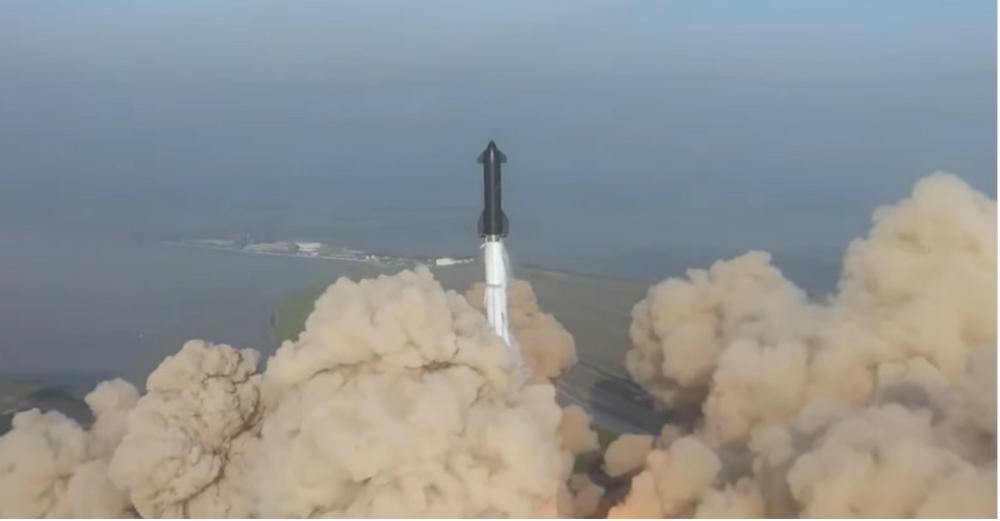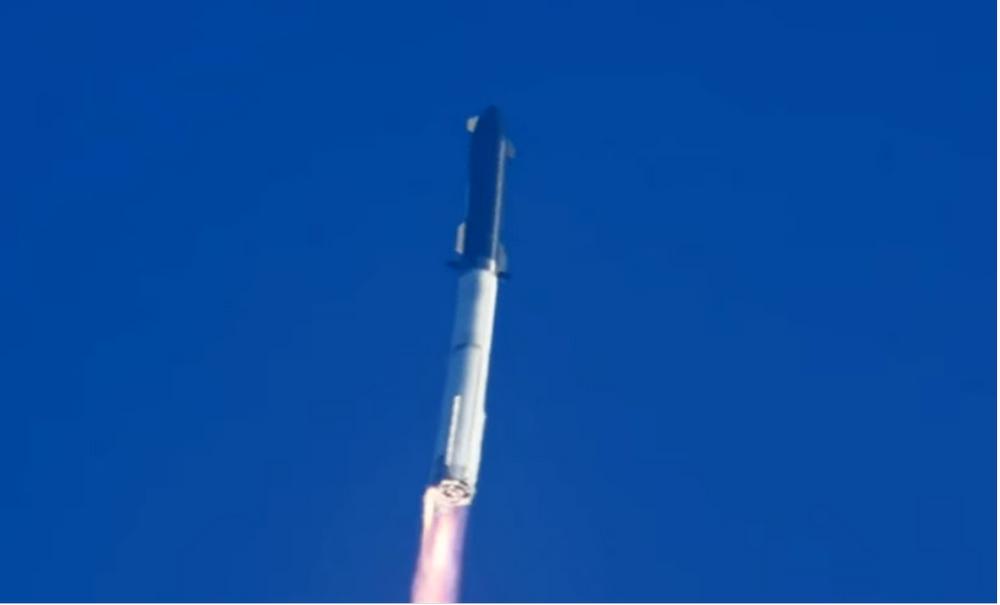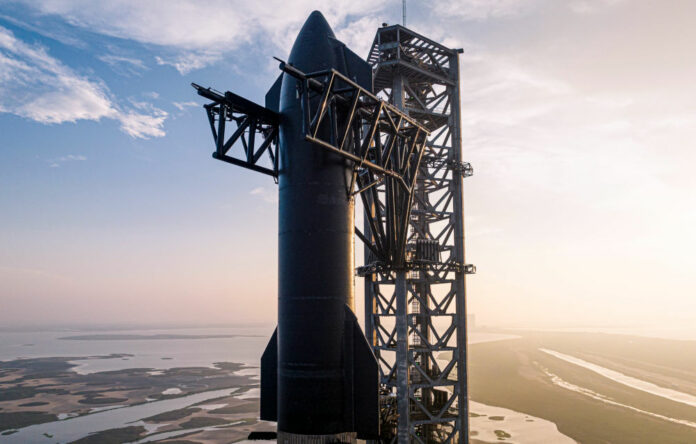SpaceX Starship has finally taken off from its launch pad in Boca Chica, Texas, marking the beginning of an era where massive spacecraft are also reusable.
Developed by SpaceX, Starship is the most powerful rocket ever made, delivering 74,500KN of thrust using its Super Heavy booster, consuming 2,800 tonnes of liquid oxygen plus 800 tonnes of liquid methane in only two minutes. After separation, the 14,700KN of thrust from the second stage brings the payload to orbit. For reference, Saturn V’s first stage – which took man to the moon – provided 34,000KN of thrust.
Starship is 119m tall with a 9m diameter reaching a masse of 5,000 tonnes when stacked and fuelled. It’s made mainly from stainless steel instead of aluminium or carbon fibres to reduce construction costs, all while offering better temperature handling.
With its Starship, SpaceX aims to reduce the price/kg of access to space, with the goal to be the vessel for colonising our Moon and planet Mars. The former as part of NASA’s return to the Moon initiative, and the latter as part of Elon Musk’s wish to colonise Mars and transform humans into an interplanetary species. Furthermore, there are also some very ambitious goals on the table, including a self-sustaining city on Mars by 2050.
Its cargo space will allow the transport of bigger satellites and telescopes capable of bringing us unseen levels of quality from the furthest parts of our universe, thanks to its 1000m3 of usable volume/150 tonne capacity.
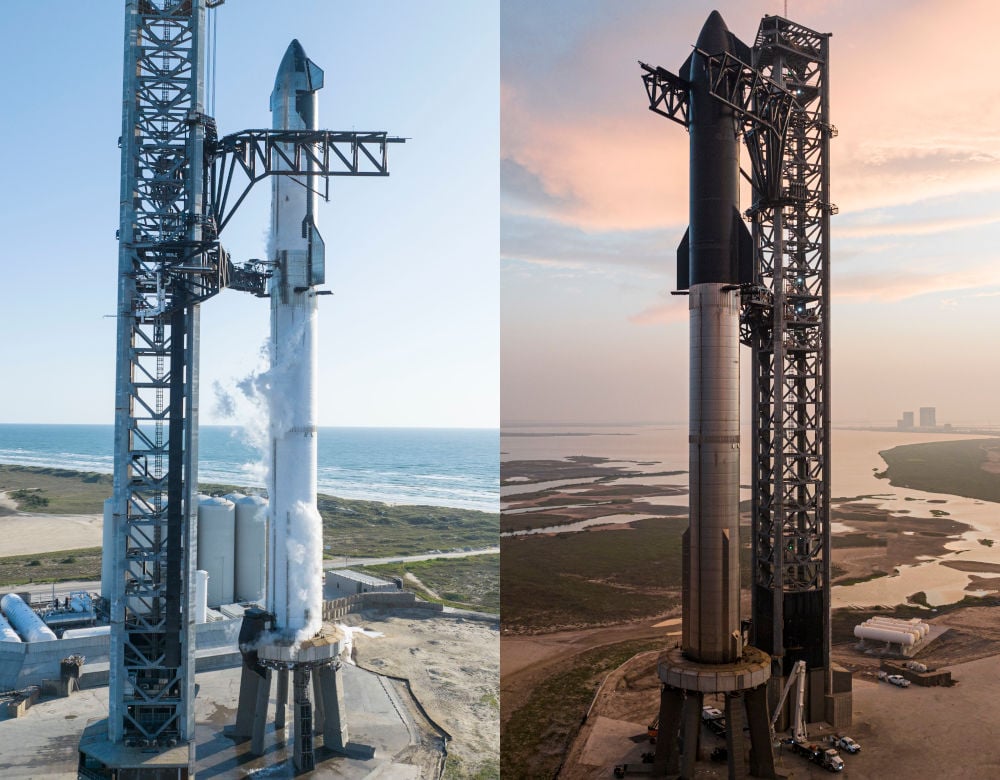
The Starship is made of two stages; the top section called Starship Space Craft and the bottom/booster called Super Heavy Rocket. It’s a bit confusing, but yeah, SpaceX calls Starship both the full rocket and the second stage. Note that naming may change in the future, since the original was BFR, for Big Fu**ing Rocket.
The unique aspect about SpaceX’s design is it’s built from the ground up to allow the recuperation of both stages after finishing their job, resulting in considerable reductions in launch prices, and most importantly, lowering the time between each launch, since the same rocket can operate multiple missions instead of fabricating a new one each time.
If the Starship achieves the same number of launches as the well-known Falcon 9 Block 5, SpaceX will be unbeatable in the price/kg-to-orbit department. For reference, the Falcon 9 number B1058 and B1060 are currently the record holders with 15 successful launches each, and that’s only because the certification has a 15-flight limit.
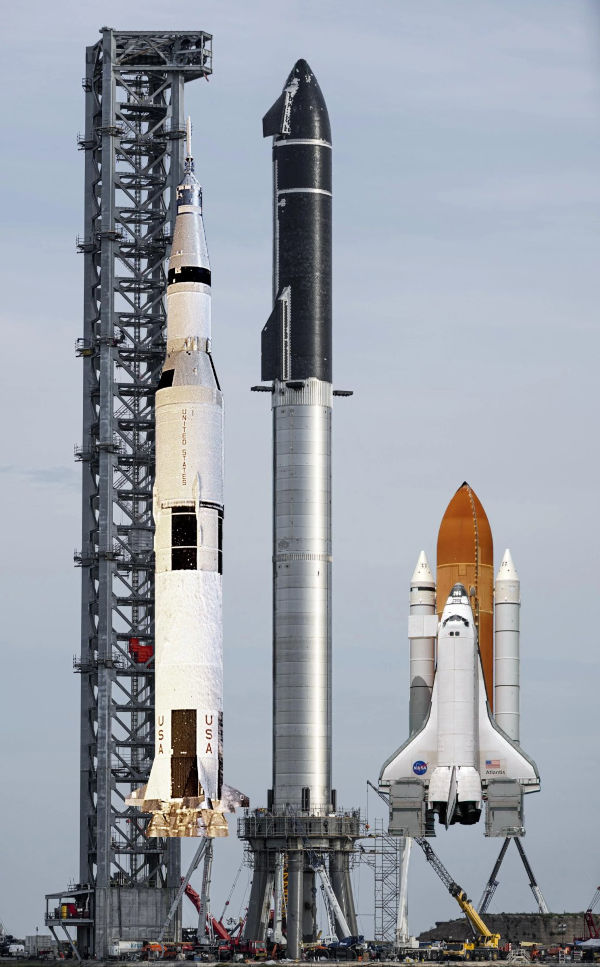
Starship is planned to have multiple versions, most notably one to land on the Moon, and one to refuel the latter in order to have enough propellant to reach the Moon/Mars. With that said, the first one to enter active service will be the version intended to deliver Starlink V2 satellites (1.25 to 2 tonnes each) which are said to bring more powerful phased-array antennas and E-band for backhaul – allowing Starlink to provide almost 10 times more bandwidth than V1.5 satellites.
Unlike the one returning to Earth, the lunar-optimised version trades all the unnecessary parts, such as the heatshield needed for Earth re-entry, for a larger living/storage area.
This test flight was planned to be destructive from the beginning, with the 69m-high first stage (bottom section) powered by 33 Raptor engines scheduled to take-off from the Starbase’s launchpad in Boca Chica, Texas, before separating after some three minutes in flight and landing in the Gulf of Mexico’s waters at approximatively 32km from shore. With the 50m-tall second stage (top section) housing three Raptor plus three Raptor Vacuum engines – featuring larger nozzle adapted to the vacuum of space – nearly achieving a full earth rotation, landing in the ocean roughly 100km off the coast of Kauai, Hawaii.
The reason why SpaceX developed these new (Raptor) closed-cycle engines is to squeeze as much thrust as possible from the onboard fuel compared to the open-cycle ones that exhaust a bit of useful fuel when powering their pumps.
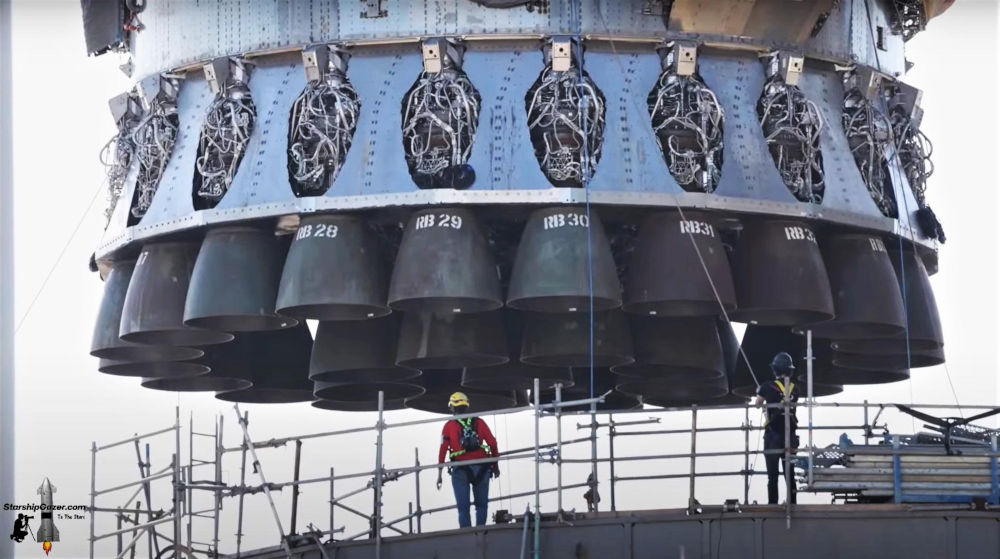
The launch was first scheduled for last Monday before getting scrapped and delayed to today due to a frozen pipe from the fuelling procedure. During the multitude of previous ground testing, SpaceX has gathered a lot of information, and this next step allows them to finally get flight data, no matter the outcome.
So, the moment this rocket lifts off away from the launch pad, the operation is considered a success, and any data gathered during the flight becomes extremely useful as it will help improve the following iterations of Starship.
Followed by more than 1.5 million viewers on SpaceX’s YouTube channel alone, the take-off was successful, going through the primary steps and reaching 2,157km/h speed, until stage separation, which didn’t happen, causing the rocket to explode at 39km of altitude in what SpaceX likes to call ‘rapid unscheduled disassembly.’
